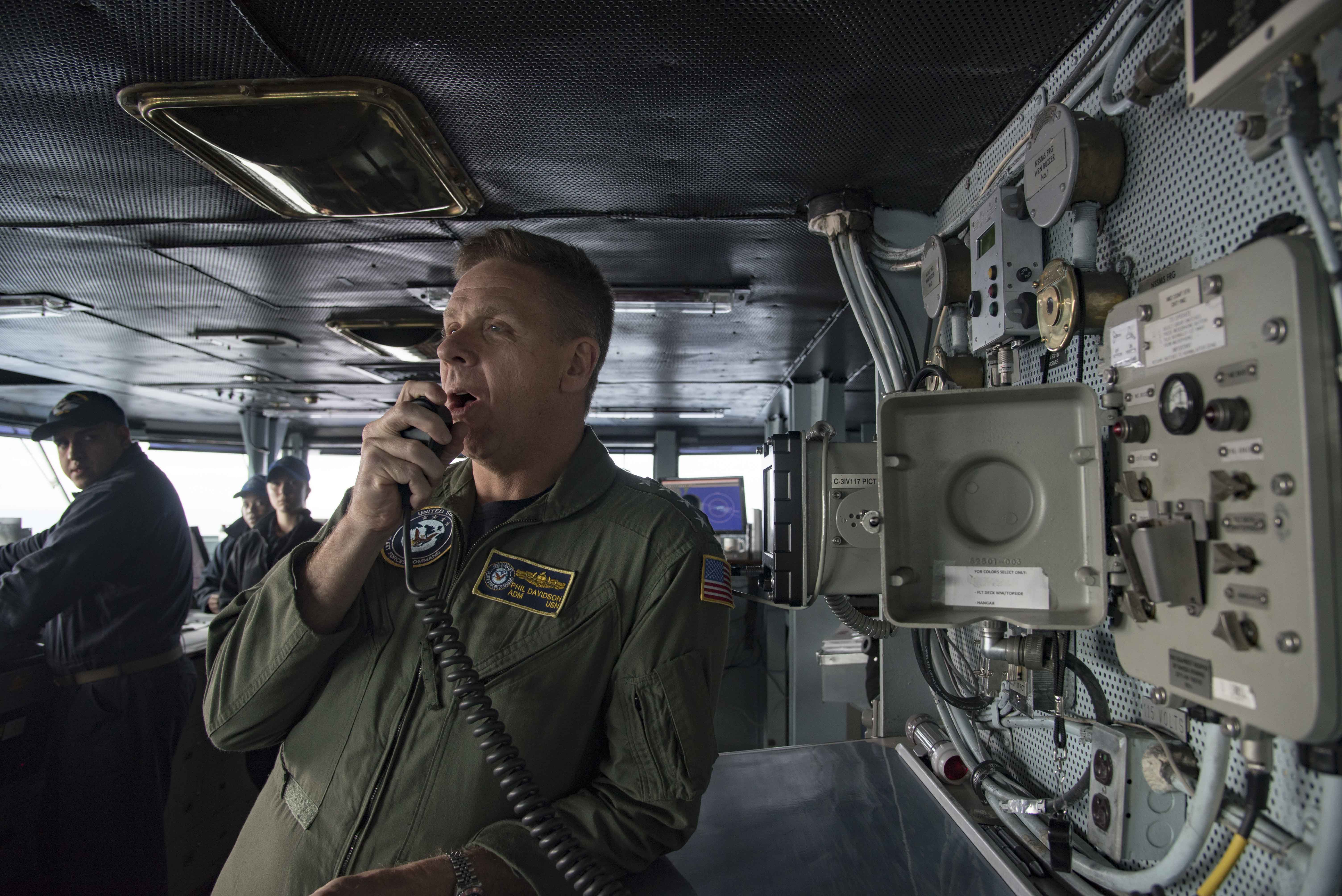
THE PENTAGON — The Navy released lengthy Comprehensive Review of its surface fleet’s operations in the wake of four dangerous and deadly incidents at sea this year that claimed the lives of 17 sailors.
Chief of Naval Operations Adm. John Richardson tasked Adm. Phil Davidson, commander of Fleet Forces, with creating the report, which looked at the entire surface fleet, but with an emphasis on U.S. 7th Fleet where this year’s deadly incidents occurred.
“Over a sustained period of time, rising pressure to meet operational demands led those in command to rationalize declining standards; Standards in fundamental seamanship and watch standing skills, teamwork, operational safety, assessment and professional culture,” Richardson said during a briefing with reporters when the report was released. “This resulted in the reduction of operational safety.”
Davidson, who attended the briefing but did not make a formal statement, led a 33-person team, including members of all branches of the military and industry experts, spent two months evaluating a wide range of factors believed to contribute to the spate of deadly incidents.
“There is a mismatch between a sustainable level of naval power that we can generate with the current assigned forces in 7th Fleet and the mission set, the growing mission set, that is emerging out there,”
Weaknesses were found in such areas as funding, training, certifications, risk management, training and maintaining such onboard electronic systems including navigation, radar, propulsion, and steering systems.
“The demand for ready and certified ships to support operations exceeded the quantity that could be supplied,” Richardson said. “Steadily increasing risks were not understood or appropriately mitigated as these ships were routinely assigned to high priority short notice tasking.”
Key Takeaways from the Comprehensive Review include:
- Significant blame is placed at U.S. 7th Fleet. The operational commanders were cited for allowing lax training and certifications throughout the fleet, and not recognizing there was a problem.
- The Budget Control Act of 2011 slashed funding across the Department of Defense, but hit the Navy especially hard when trying to man the fleet. Navy is having a hard time retaining a high number of apprentice level sailors on ships, especially guided-missile destroyers, homeported at forward deployed bases such as those in Japan, Spain, and Bahrain.
- Manning shortfalls contributed to overall degrading quality of work and life for ships’ personnel based in Yokosuka, Japan, a key tenet of a functional readiness cycle. This gap, coupled with high operational tempo, impacted some ships’ ability to sustain individual tempo for the sailors while still trying to meet operational and training expectations of a fully manned ship.
- In general training for officers is uneven and enlisted, with many arriving at forward deployed ships not properly trained for their jobs at sea, especially with enlisted if they change ratings. Bridge teams are trained haphazardly, with commanding officers either deferring to the system inherited or using something he or she experienced in their career. There is no set standard.
- Upgrades to ships have been uneven, with equipment or even layouts on bridges not standardized across the fleet. Some ships resort to using commercial radar equipment because the equipment installed is either outdated and hard to integrate with newer bridge equipment, or not working because of difficulties arranging time for repairs.
- When designing ships, the surface community based design process on one used by submarine community but with a big difference – the submarine community focuses design on what the crew needs to work efficiently and safely while the surface community focuses bridge design on expenses.





